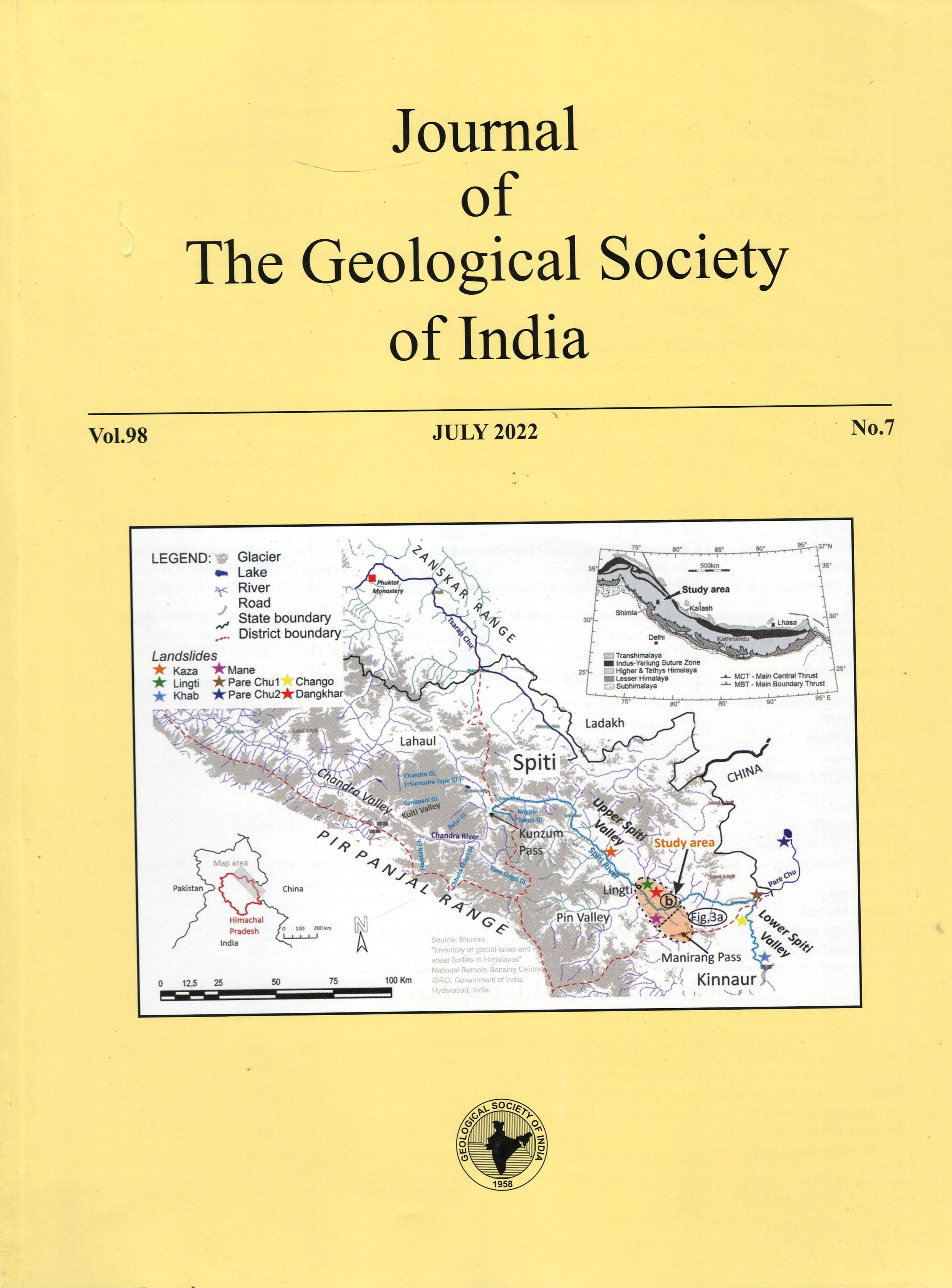Lithium Potential of the Indian Granitic Pegmatites
DOI:
https://doi.org/10.1007/s12594-022-2095-xKeywords:
No KeywordsAbstract
There is a progressively increasing demand for lithium (Li) due to its growing applications in the Li-ion batteries for electric vehicles. Accordingly, to take stock of the situation with respect to lithium potentiality of the Indian granitic pegmatites, a critical synthesis is presented here. India’s exploration programme for lithium was not sustained due to fluctuating domestic demand and its availability in the world market. Data reveals that the Indian Li-pegmatites belong to the Lithium-Caesium-Tantalum (LCT) family, and occur manly in parts of Bihar-Jharkhand, Bastar-Odisha and Karnataka, with some in Rajasthan, Maharashtra, West Bengal and Assam. Major mineral phases of Li are lepidolite, amblygonite and spodumene, the last one being dominant in Karnataka. Bulk of the Li-pegmatites have been derived from the peraluminous, geochemically-evolved S-type granites. During fractionation, wherever saturation was attained, precipitation of independent minerals of Li took place. Lithium minerals are largely restricted to the replacement zones of pegmatites, and, at places, in the greisenised pockets within the pegmatites and parent granite margins. Pegmatites from Karnataka appear to have more potential relative to those from Bihar-Jharkhand and Rajasthan. Systematic exploration of Li-pegmatites may prove rewarding in establishing their Lipotential. Li-pegmatite fields may be mapped by applications of remote sensing, using various methods and sensors through spectral angle mapper (SAM) classification on ‘HyMap’ data. SAM classification may be used to assess the efficacy of advanced spaceborne thermal emission and reflection radiometer (ASTER), and Landsat-8 operational land imager (OLI) data, including new combinations of red, green and blue (RGB). By combined use of ASTER imagery and spectro-radiometric analysis, mapping of pegmatite veins may be carried out. As the LCT-type pegmatites are sourced mostly from previously un-melted, mica-enriched metamorphic rocks, muscovite and biotite groups of mica host bulk of the trace elements and thus fingerprint for the LCTtype pegmatites. Also, P- and Cs-enriched Li-pegmatites lend further support to the S-type sources for the LCT-type pegmatites. Accordingly, all the LCT-type pegmatites in India should form the first order target for Li-exploration. Characteristic replacement mineral assemblages like cleavelandite, topaz, greisen, schorl and lithian muscovite may also serve as guides for lithium exploration.

 Yamuna Singh
Yamuna Singh






